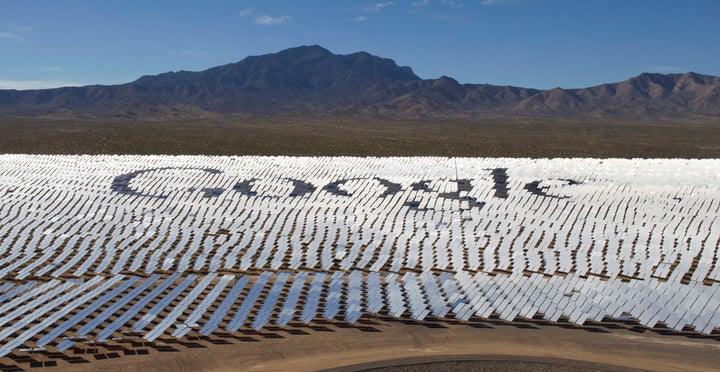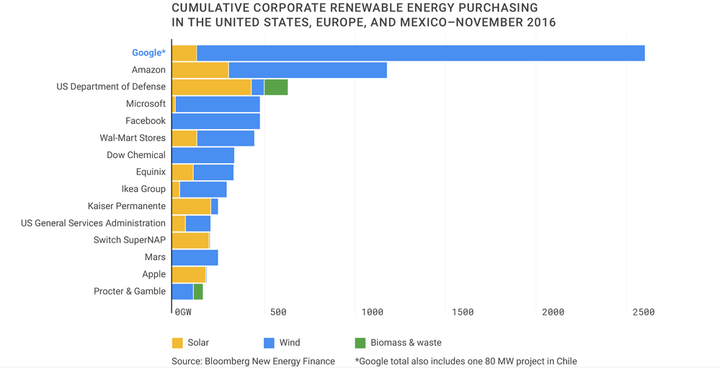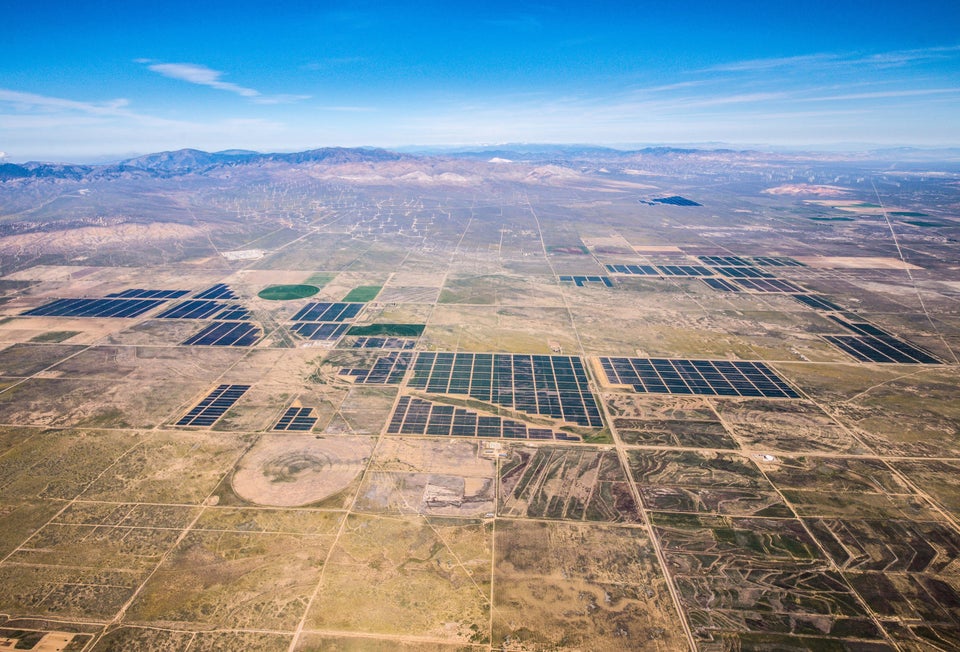
Maybe it’s time to add a little more green to the Google logo.
Google is a year ahead of schedule in its plan to switch to renewable energy, the company announced Tuesday. It should be 100 percent powered by green resources in 2017.
The company’s 13 data centers and numerous offices around the world require 5.7 terawatt hours of electricity each year, The Associated Press reports. That’s about how much energy all of San Francisco consumes.
“We are convinced this is good for business, this is not about greenwashing. This is about locking in prices for us in the long-term,” Marc Oman, Google’s energy lead in the European Union, told The Guardian. “Increasingly, renewable energy is the lowest-cost option. Our founders are convinced climate change is a real, immediate threat, so we have to do our part.”
Google currently relies primarily on wind and solar for clean energy. Steep drops in the cost of each technology ― 60 percent and 80 percent, respectively, in the last six years ― has made renewables a cost-effective option, the company said.
Given its huge need and deep pockets, the company negotiates renewable energy purchases with suppliers directly. It signed its first clean-energy contract in 2010, with an Iowa wind farm, and now funds 20 renewable energy projects around the world.

Google’s ambitions spread beyond its own energy needs.
“Climate change is real,” the company states on a page explaining its responsibility to environmental stewardship. “Every company makes choices — about products, about planning, about purpose, about people. You approach these decisions differently if you’re focused not on your next earnings release, but on future generations that will have to live with the consequences of the choices you make today.”

